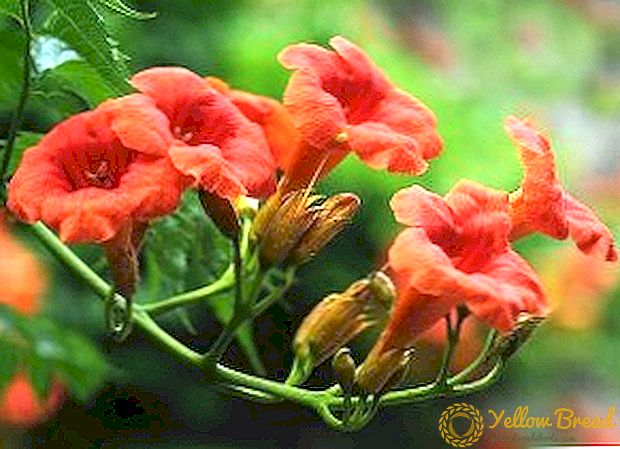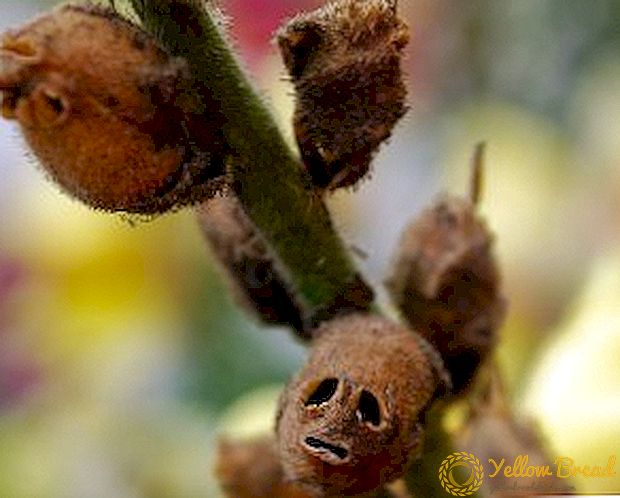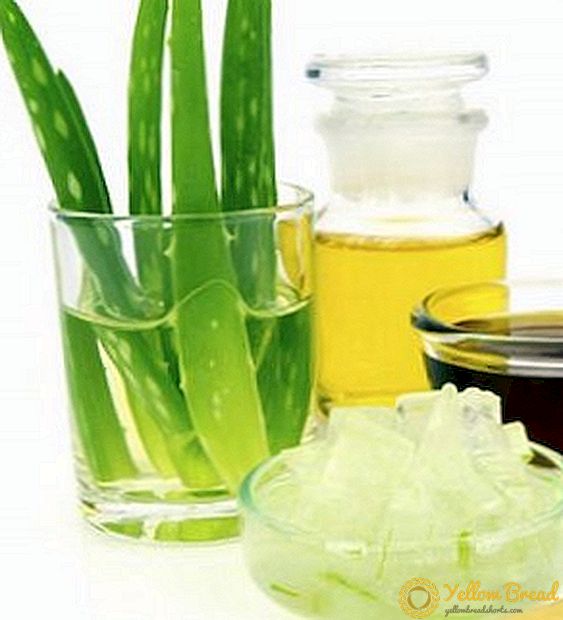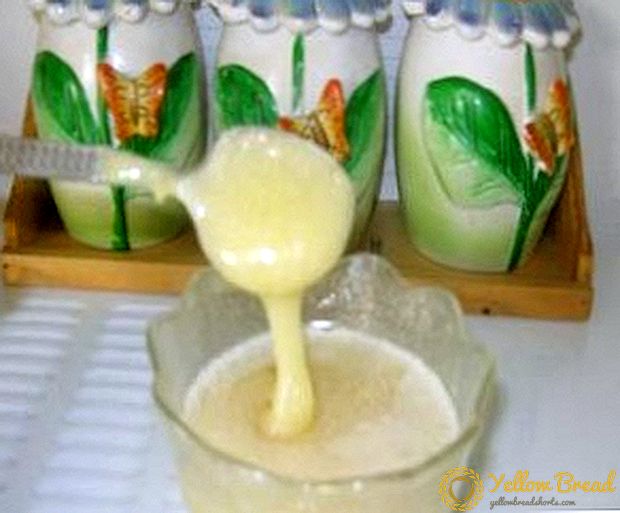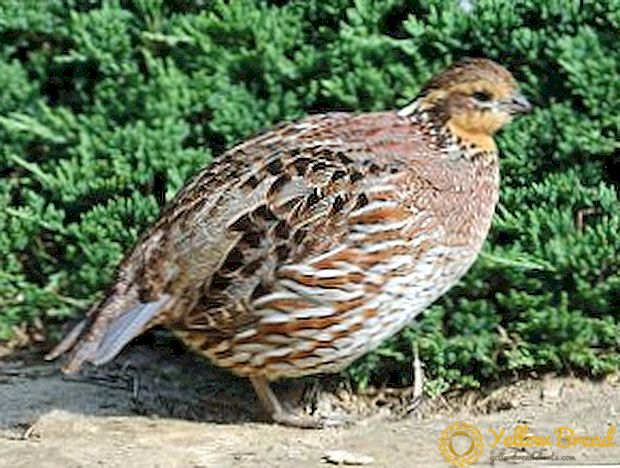 Carnation (Dianthus) is an ideal perennial, capable of permanently providing a bright, unusually decorative look to a flower garden or a backyard plot. All types and varieties of carnations are distinguished by a variety of colors, luxuriant bloom and size of inflorescences. More than 300 species of this plant, which grows almost all over the world, are known, of which there are about 100 garden forms. Some are perfect for borders, others will decorate lawns and flower beds. Therefore, every florist will be able to choose from such a variety of vending species and create a work of landscape art on his plot.
Carnation (Dianthus) is an ideal perennial, capable of permanently providing a bright, unusually decorative look to a flower garden or a backyard plot. All types and varieties of carnations are distinguished by a variety of colors, luxuriant bloom and size of inflorescences. More than 300 species of this plant, which grows almost all over the world, are known, of which there are about 100 garden forms. Some are perfect for borders, others will decorate lawns and flower beds. Therefore, every florist will be able to choose from such a variety of vending species and create a work of landscape art on his plot.
This article provides examples of what types of cloves are, as well as some features of their cultivation.
- Alpine carnation
- Dianthus
- Needle-shaped carnation
- Chinese carnation
- Meadow carnation
- Pink Clove
- Sandy carnation
- Lush carnation
- Carnation travyanka
- Turkish carnation
- Gray Carnation
- Carnation Shabo
Alpine carnation
Alpine carnation is a variety of carnation, also known as rock garden. This is a perennial plant of the family cloves, in the wild it grows on limestone areas of Austria, Slovenia, in the north-east of Italy. Rock garden is a slim, graceful plant, reaching a height of 20 - 50 cm. The flowers are purple-red, with a delicate, barely perceptible scent.  The name of this species indicates the optimal placement of the flower - alpine slides. If there is no such place, cultivation of alpine carnation is possible in sunny areas, slightly raised, where there is no stagnation of water. This may be a “hollow” or rocky scree, located on the south side under a slight slant. The plant prefers light, loose, sandy soil or light loam.The rock garden responds well to top dressing with mature compost. However, an excess of fertilizers does not tolerate - it quickly gets old and loses its resistance to temperature drops and cold. The most popular alpine carnation variety is Albus with white flowers.
The name of this species indicates the optimal placement of the flower - alpine slides. If there is no such place, cultivation of alpine carnation is possible in sunny areas, slightly raised, where there is no stagnation of water. This may be a “hollow” or rocky scree, located on the south side under a slight slant. The plant prefers light, loose, sandy soil or light loam.The rock garden responds well to top dressing with mature compost. However, an excess of fertilizers does not tolerate - it quickly gets old and loses its resistance to temperature drops and cold. The most popular alpine carnation variety is Albus with white flowers.
Dianthus
The Armerian carnation is an annual or biennial plant of the carnation family, not exceeding a height of 10 - 50 cm. The carnation is Armeid-shaped, distributed almost everywhere, the homeland of the species is Europe, South-West Asia and North America. Today, the species is widely used in landscape design when composing floristic compositions. The leaves of the plant are linear, inverse lanceolate form, from 2 to 10 cm in length. From the bottom, the stems of the plant are almost bare, and closer to the inflorescences are densely and shortly pubescent. Inflorescences are single or umbrella - 3-6 pcs., The corolla consists of five toothed red-pink and purple petals with small white specks. Flowering from June to September. Armeania carnation does not have pure varieties, but its hybrids are very popular - "New York Evening", "Caramel" and "Zoryanka". 
Needle-shaped carnation
The needle-carnation is a perennial plant. The species grows on rocky slopes, in dry pine forests, on sandy soil, limestone cliffs, on the banks of rivers. It is found in the wild in Eastern Europe, Western Siberia, Central Asia and the Far East. Plant - shrub, has taproot, stems reach a height of 10-30 cm, forming a dense outlet. It has hard, triangular, acute needle-shaped leaves (hence the name of the species).  Inflorescences paniculata-ciciate, flowers large, solitary, white, with five petals, very fragrant. Buds are formed by mid-May, flowering begins in the first half of June and ends in late July.The fruit of the needle-shaped carnation is a multi-seeded two-membered box with a shell. The most popular varieties are "Badia" and "Essence".
Inflorescences paniculata-ciciate, flowers large, solitary, white, with five petals, very fragrant. Buds are formed by mid-May, flowering begins in the first half of June and ends in late July.The fruit of the needle-shaped carnation is a multi-seeded two-membered box with a shell. The most popular varieties are "Badia" and "Essence".
Chinese carnation
Chinese Carnation - the most preferred species by gardeners, grown mainly as an annual. The height of plants of this species ranges from 10 to 45 cm. The flowers are large, up to 7 cm in diameter, can be double, semi-double or non-double. The color of the flowers is varied: from white, pink and crimson to red, lilac, richly violet and purple. The flowers are mostly two-colored with a contrasting "eye" or a rim. Blooms Chinese carnation in July - October.  The Chinese species has a compact root system, so low-growing varieties and hybrids of this carnation are great for indoor cultivation. Also harmoniously this look looks in borders, along garden paths, etc. Early flowering varieties like sunny areas.
The Chinese species has a compact root system, so low-growing varieties and hybrids of this carnation are great for indoor cultivation. Also harmoniously this look looks in borders, along garden paths, etc. Early flowering varieties like sunny areas.
The most common varieties of Chinese type of carnations are, above all, the Diana Mix F1 variety series, which includes the varieties: Diana White, Diana Crimson, Diana Scarlett, Diana Cherri, Diana Red Center White " and etc.These varieties have many advantages: simplicity, compactness of the bush, early flowering, beautiful lace flowers with various colors.
Meadow carnation
The meadow carnation, or field, belongs to the perennial species of the plant of the family of cloves. The name of the species comes from the place of its growth. The plant has numerous stems that reach a height of from 30 to 50 cm. The leaves are linear lanceolate, dry in the lower part before the clove blooms. Flowers can be single or paired, up to 2.5 cm in diameter, reddish-pink color. The meadow carnation blooms at the end of June and blooms for a half to two months. This is one of the few types of carnations that bloom in the first year.  The field carnation is very light-requiring, it grows in open sunny places. Looks good in alpine slides, curbs and as a color accent on lawns. The peculiarity of the species is that it can quickly grow after damage and does not allow other plants to grow on "their territory".Thanks to this carnation can form creeping flowering carpets.
The field carnation is very light-requiring, it grows in open sunny places. Looks good in alpine slides, curbs and as a color accent on lawns. The peculiarity of the species is that it can quickly grow after damage and does not allow other plants to grow on "their territory".Thanks to this carnation can form creeping flowering carpets.
Pink Clove
The carnation is pinnate, or Hungarian - another perennial species that grows in the wild on the calcareous, mountainous areas of Europe: from the Alps in Italy to the Slovak Tatras. The species has been cultivated since 1568. The plant reaches a height of about 25-30 cm, the stems form a dense cushion of a large number of shoots. The leaves are oblong, linear and greenish-blue in color, the root system is fibrous. Flowers normal or double, up to 3 cm in diameter, with fringed petals, cut along the edge.  They have a strong aroma and a variety of color options: white, pink, red, purple. Plumed pink carnation from June for a month. This type of carnation has a variety of garden forms and varieties, so its cultivation is possible in open flower beds, greenhouses and in room conditions. They differ in the size of fluffy buds, the absence or presence of a pronounced aroma, as well as the number of blossoms per season. Cirrus carnation is a rather cold-resistant species that blooms in the second year after sowing.
They have a strong aroma and a variety of color options: white, pink, red, purple. Plumed pink carnation from June for a month. This type of carnation has a variety of garden forms and varieties, so its cultivation is possible in open flower beds, greenhouses and in room conditions. They differ in the size of fluffy buds, the absence or presence of a pronounced aroma, as well as the number of blossoms per season. Cirrus carnation is a rather cold-resistant species that blooms in the second year after sowing.
The most popular varieties of pinnate carnations in horticulture: "Scottish Terry" - remontant form (blooms twice a season), has a different color of flowers; "Alba" - with white flowers; "Desdemona" - dark pink flowers.
Sandy carnation
Sandy carnation is a European type of carnation, perennial, distributed practically in Central Europe, the European part of Russia and on the Caucasian slopes. In the culture of this type of carnation since 1732. Growing, this species forms turfs, tightly pressed to the ground and densely covered with foliage.  The stems of the plant are straight, from 10 to 30 cm tall, branched and bare from above, greenish-gray. Leaves linear or linear-lanceolate, sickle-curved, rough.Flowers solitary, very fragrant, white, sometimes pinkish. Their plate is fringed, divided into filiform lobes, with hairs at the top. Sandy carnation blooms in June - July. Can be grown on dry soils, does not tolerate moisture. The most popular variety, characterized by a strong, bright aroma - "Nostalgie". It grows no higher than 30 cm, the flowers are white and yellow, with long, fringed petals.
The stems of the plant are straight, from 10 to 30 cm tall, branched and bare from above, greenish-gray. Leaves linear or linear-lanceolate, sickle-curved, rough.Flowers solitary, very fragrant, white, sometimes pinkish. Their plate is fringed, divided into filiform lobes, with hairs at the top. Sandy carnation blooms in June - July. Can be grown on dry soils, does not tolerate moisture. The most popular variety, characterized by a strong, bright aroma - "Nostalgie". It grows no higher than 30 cm, the flowers are white and yellow, with long, fringed petals.
Lush carnation
Lush carnation - European-North-Asian species, perennial with a creeping root. The species has been cultivated since 1593. The plant has single stems up to 60 cm high and linear lanceolate sharp leaves. Large, very fragrant flowers are located on long stalks. Color varies from white to pink and purple; petals fringed, with filiform lobes. Ten stamens. Pillars two.Lush clove blooms in June-July, recurrent blooming is often observed in October. The plant can grow well in the penumbra, blooms in the second year of sowing.  Differs a kind of fragility: winters badly, with each flowering bush weakens, flowering decreases. This disadvantage can be hidden by self-seeding during mass cultivation. Then the plants replace each other and bloom long and abundantly. Lush carnation flowers are equally good in borders, on stony hills and in cut. The varieties are combined in the “Magnificent” variety series. It is a mixture of varieties with pink and purple flowers with heavily dissected petals, sometimes with colored patches.
Differs a kind of fragility: winters badly, with each flowering bush weakens, flowering decreases. This disadvantage can be hidden by self-seeding during mass cultivation. Then the plants replace each other and bloom long and abundantly. Lush carnation flowers are equally good in borders, on stony hills and in cut. The varieties are combined in the “Magnificent” variety series. It is a mixture of varieties with pink and purple flowers with heavily dissected petals, sometimes with colored patches.
Carnation travyanka
Carnation travyanka has many varieties, which differ in the description of flowers and color variation. It grows in meadows, on forest edges and glades, in clearings, roadside meadows, in river valleys. This is a perennial plant that has a thin rhizome and ascending stems, up to 40 cm high. The leaves are pubescent with short hairs, sharp, rough. Flower petals are pink or red, with purple spots and long hairs, sharp-toothed along the edge.  Carnation blooms grass from June to September.The look differs in high frost resistance, especially young plants. Effectively looks in pair with a bell, a thyme or a fescue or separately on dry soils. The most common varieties of carnation are grass: "Brilliance" - very low plants up to 15 cm, with raspberry flowers; "Flash Light" - dark red flowers.
Carnation blooms grass from June to September.The look differs in high frost resistance, especially young plants. Effectively looks in pair with a bell, a thyme or a fescue or separately on dry soils. The most common varieties of carnation are grass: "Brilliance" - very low plants up to 15 cm, with raspberry flowers; "Flash Light" - dark red flowers.
In 2004, the German breeders were presented a new variety "Confetti", which is characterized by long flowering and has 4 options for flower color. Other popular varieties: "Kant-libra" - low plants with pink, red and white flowers; "Maiden Pink" - flowers of various shades of red, etc.
Turkish carnation
The carnation is Turkish, or bearded, as well as grass, is a very common flower plant, varieties of which differ in their description and variations of color. The homeland of the plant is Southern Europe, where it grows in groves, meadows and rocky slopes. This garden type of carnation has been cultivated since ancient times as a biennial plant. The stems of the plant reach a height of 20 to 60 cm. The flowers are dense, flattened, monochromatic, of various colors. The second name "bearded" has received in the people for the bracts ciliate leaves that are present in each flower.  The most common monochrome varieties of Turkish carnation are the Red Monarch, Newport Pink, Vice-Reisen, Diadem, Kupferrot, Mirage, etc. Some varieties may bloom again. Turkish carnation is distinguished by unpretentiousness in cultivation, it can grow in the shade. It blooms in the second year after planting, in the third year most of the plants die. The Turkish carnation in the Alpine hills looks advantageous - it spreads over the surface forming motley patterned carpets.
The most common monochrome varieties of Turkish carnation are the Red Monarch, Newport Pink, Vice-Reisen, Diadem, Kupferrot, Mirage, etc. Some varieties may bloom again. Turkish carnation is distinguished by unpretentiousness in cultivation, it can grow in the shade. It blooms in the second year after planting, in the third year most of the plants die. The Turkish carnation in the Alpine hills looks advantageous - it spreads over the surface forming motley patterned carpets.
Gray Carnation
Carnation is blue-gray, or gray-blue - in nature it is found on rocks, rocky slopes and pine forests of Central Europe. Cultivated since 1830. This is a cushion-shaped perennial, whose stems reach a height of 25 cm. The leaves are a bluish-blue plant, narrow, linear in shape. The flowers are simple, very fragrant, can be white, pink or carmine. Blooming blue carnation from the end of June, for 35-40 days. The plant is best grown in sunny places with dry loose soil, moderately nutritious. Does not tolerate wet, heavy soils. Well propagated by self-sowing, can serve as a ground-cover plant. Effectively looks in landings with bells, yaskolka, gypsophila, in rocky gardens or as a border plant. Popular varieties of pink and pink carnations: Pink Blanca, Microchip, Confetti, Flora Pleno. 
Carnation Shabo
Chabot carnation is a plant that reaches a height of about 60 cm. The species was derived by the French pharmacist Chabot at the beginning of the 19th century, hence the name. It has straight stems and knotty gray-green leaves. Flowers of carnations Shabo terry, with a diameter up to 6 cm, differ in fragrant aroma and various variation of colors. The plant is light and heat loving, can tolerate light frosts. Looks good plant in flower beds, rabatkah, mixborders, on balconies and loggias. used for gardening balconies and loggias. Most often, the carnation of Shabo is cultivated as an annual, in the southern regions a two-year growth is possible.  Shabo is one of the long-blooming carnations, distinguished by the duration of storage in the cut. For two centuries of cultivating the Shabo species, breeders have developed many varieties with flowers of different colors.The most beautiful of them: "Jeanne Dionis" - white; "La France" - light pink; "Pink Queen" - hot pink; "Aurora" - peach color; "Marie Shabo" - yellow; "Etinselyan" - bright red; "Fire King" - orange-red; "Legnien d'Oner" - dark cherry color; "Mikado" - purple and "Luminette Mix" - a variety of colors.
Shabo is one of the long-blooming carnations, distinguished by the duration of storage in the cut. For two centuries of cultivating the Shabo species, breeders have developed many varieties with flowers of different colors.The most beautiful of them: "Jeanne Dionis" - white; "La France" - light pink; "Pink Queen" - hot pink; "Aurora" - peach color; "Marie Shabo" - yellow; "Etinselyan" - bright red; "Fire King" - orange-red; "Legnien d'Oner" - dark cherry color; "Mikado" - purple and "Luminette Mix" - a variety of colors.

